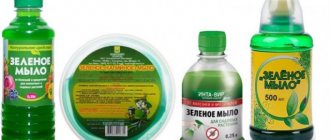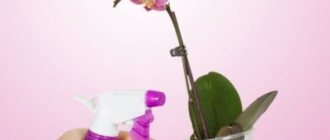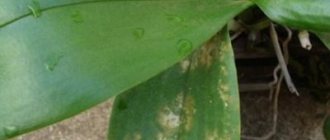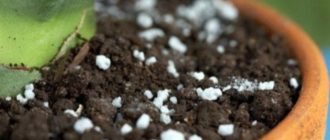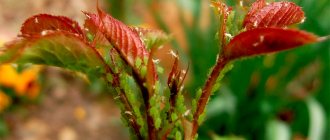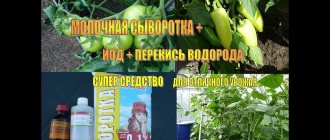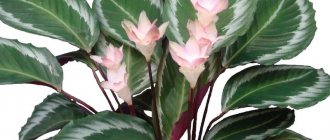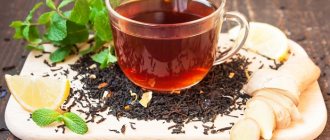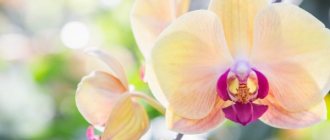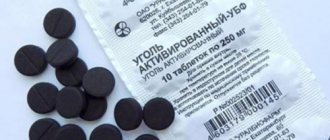An insecticide with contact action. Active ingredient: potassium salts of fatty acids. Produced by several manufacturers: Green Belt, Fasco, Sadovnik, etc., in the form of a solution (0.25 l, 0.5 l). Ingredients: water, potassium salts of fatty acids, natural fats and vegetable oils. It is considered an environmentally friendly drug.
Used to protect garden crops and indoor flowers from pests: thrips, scale insects, aphids, bedbugs, pennies. Potassium salts are also effective against some types of mites, but are not effective or have little effect against whiteflies and scale insects!
Application
Green soap is used in its pure form, diluted with water, or as an adhesive in solutions where an alkaline reaction is acceptable (the pH of the solution is from 7 to 8), or in a mixture with other agents (infusions of herbs, tobacco, etc.).
How to dilute green soap against pests:
- against aphids and mites 200-400 g of green soap per 10 l
- against scale insects 200-300 g of green soap per 10 l
- against aphids 200-400 g of green soap per 10 l
To combat bedbugs, green soap is used as part of a complex solution: 4 parts potassium soap, 1 part turpentine, 2 parts kerosene and 12 parts water.
For indoor flowers, the recipe is simple: dissolve 1 tablespoon of green soap in 1 liter of warm water. If a measuring cup is included, use it as directed.
Features of the drug
The effect of soap on insects and arthropods (ticks) is to envelop the body with a film and block the respiratory tract.
Green soap can be mixed with other insecticides, in particular with decis, karbofos, intavir, at the rate of 40-100 g per 10 liters of water; soap, in addition to its main properties (toxicity to pests), gives the pesticide solution better stickiness, i.e. the solution forms a more stable film over the surface of the sheet.
For the same reason, green soap is often used in combination with fungicides against a number of plant diseases, for example, powdery mildew, rust, and fungal spotting. Usually the main component is some kind of copper-containing preparation, for example, copper sulfate. To prepare 1 liter of solution, pour exactly 800 g of warm water into a 1-liter jar, add 30 g of green soap and mix. In another jar, 2 g of copper sulfate is dissolved in 200 g of warm water. Then slowly (in a thin stream) with continuous stirring with a wooden stick, pour the vitriol solution into the soap solution. This solution is sprayed on the plants leaf by leaf against fungal infections.
Gardeners often use a solution of green soap against powdery mildew and other diseases, in combination with soda ash. In this case, take 50-100 g of soap and 50 g of soda per 10 liters of water.
Another effective recipe for ticks: 20 g of ground dried garlic (40-50 g of fresh garlic), 200 g of green soap, diluted with water to 10 liters of water. If the garlic is fresh, you need to crush it in a mortar, if dry, steam it in a small amount of boiling water.
No more than 3 applications per season are allowed with green soap. Process for the last time no later than 5 days before harvest.
Toxicity
Green soap has a hazard class of 4 (low hazardous substance). Not phytotoxic. Practically non-toxic for birds, earthworms, soil microorganisms and bees (the border protection summer zone for bees is at least 3 - 4 km, the flight limit for bees is 48 - 72 hours).
Fruit or berry trees and shrubs can be processed at least five days before harvest. If green soap is not used in its pure form, but with the addition of other pesticides or turpentine, then treatments are carried out before flowering, or after harvesting, no later than 30 days before harvesting.
Security measures. Handle using gloves. While working, you must not smoke, drink, or eat. Dilute the working fluid solution exclusively in glass or porcelain containers. Do not use dishes that have come into contact with alkali for household purposes or cooking. Store the drug in a cool, dry room at a temperature from -10C to +35C, separate from food and medicine, out of the reach of children and pets! Storage of the working solution is not allowed. The shelf life of green soap is 1-2 years (see on the package).
First aid for poisoning: if the drug gets on the skin, rinse with plenty of water, to neutralize the alkali, apply a gauze bandage soaked in a 5% acetic acid solution to the affected area after rinsing (for 10 minutes). After removing the bandage, rinse the skin with water. In case of contact with eyes, rinse thoroughly with running water for 15-20 minutes. Then rinse the eyes with a 2% solution of boric acid and drip albucid. Do not hesitate to consult an ophthalmologist. If ingested, drink 3-4 glasses of water, induce vomiting, take several tablets of activated charcoal, and seek immediate medical attention.
All experienced gardeners and gardeners are familiar with fungicidal soap. This product has proven itself to be excellent. It stands out from the rest due to its compatibility with other drugs, safety for humans and high efficiency.
Ant protection
Tar soap is also useful for removing ants. The prepared composition can be poured into an anthill. Sometimes damaged bushes, leaves and stems are sprayed with it. Sometimes soda is additionally added to the solution, but when preparing such a solution you need to carefully monitor the dosage. Sodium carbonate is an aggressive substance.
Before preparation, the soap is crushed and 10 liters are poured. hot water. It remains to pour half a glass of baking soda and leave for 120 minutes. After this, the solution is filtered through 2-4 layers of gauze. The areas where ants live should be watered generously. If the nest is located underground, then before processing it must be dug out by removing the top soil. After some time, the ants will disappear and will no longer appear in this place.
Instead of soda, you can apply tobacco leaves to tar soap. You will need 200 g of them. First, pass them through a coffee grinder, pour them into a bucket, add hot pepper. Pour the mixture with 10 liters of water, leave for a day to infuse. When the time is up, add 40 g of tar soap.
How it works
After spraying, an environment is formed that prevents the development and reproduction of parasites. Adults that are on the treated plant die, as they lose the ability to eat and breathe.
This happens because the drug used contains components that turn into a film. It covers all surfaces, tissues, including the insects themselves. Layed eggs that have been exposed to the product stop developing and gradually die.
Important: insecticidal soap is used not only to fight insects, but also to prevent their appearance.
Mealybugs
You can find out about the presence of mealybugs on an orchid by plaque on the substrate, roots or inner walls of the pot. This cotton-like substance forms around female scale insects, which are always motionless. If you lift such a “yarn,” you can see both the insects themselves and their eggs. Most pests accumulate on flowers and peduncles, as well as on the inside of leaves.
Reason for appearance
The main reason for the appearance of mealybugs on an orchid is considered to be a violation of the conditions of detention. Weakened plants or specimens overfed with nitrogen fertilizers are much more susceptible to pest damage than healthy orchids.
How to get rid of mealybugs
Every day, morning and evening, you need to remove scale insects from the orchid using a toothpick or a soft thin stick. After this, the places where the insects were located must be treated with a cotton swab moistened with water or liquid soap.
Along with this, the substrate and the lower part of the orchid must be sprayed with Fitoverm (2 times at intervals of a week).
Treatment can be considered successful if not a single new insect is found on the orchid within a month.
Mealybug on an orchid flower
Folk remedies
An oily spray can help control mealybugs. It consists of 2 tbsp. olive oil and 1 liter of water. This emulsion should be sprayed onto the orchid using a sprayer.
Flower growers also speak well of an alcoholic solution with soap. It is made up of 15 g of liquid soap, 10 ml of denatured alcohol and 1 liter of water. Keep in mind that the product is not suitable for orchids with thin leaves.
Prevention
When buying a new orchid, you need to carefully check it for pests, since there is always a risk of purchasing a plant that is already infested with mealybugs. The second important measure is periodic inspection of all specimens of the home flower garden. After all, once mealybugs settle on one plant, it will be extremely difficult to get rid of them. Don’t forget about proper care, the main components of which are good lighting and high air humidity.
What is green soap used for?
It is rarely used in its pure form; it is often diluted with water. Plants of any type are sprayed to get rid of insects and prevent their appearance. The substance also helps to cope with a number of diseases that are inherent in various domesticated crops.
From diseases
In the treatment and prevention of many plant ailments, the drug is used as part of a highly effective mixture based on copper sulfate. This solution is considered the most effective remedy against fungi.
Dilute 250 g of soap into 10 liters of water at room temperature. 25 g of copper sulfate are dissolved in 2 liters of hot liquid. When both preparations are ready, slowly pour the second one into the soap solution, stirring thoroughly during the process.
The above-ground part should be sprayed three times a month. When it comes to outdoor plants, you need to choose a day with little sun and no wind. There should be no rain in the next week.
Processing indoor flowers
For small representatives of home flora, little solution is needed. 1 tbsp is enough. active substance per 1 liter of water at room temperature. It is better if the liquid sits for at least a day before cooking.
Some instructions for using insecticide for the most popular indoor plants, as an example.
Green soap for orchids, how to use:
- The maximum dose is 100 ml per 10 liters of water.
- If the flower is severely damaged, the procedure is repeated.
- No more than 3 treatments with an interval of 1 week.
- Cut flowers if present. If the solution gets on them, the buds will quickly wither and fall off.
- After spraying, place the pot with the sick “tenant” in quarantine and cover it with film to enhance effectiveness.
Green soap for violets, method of use:
- The proportions of the solution are 200 ml per 10 liters of water.
- Spray 1 to 3 times weekly.
- Prevention after treatment - 100 ml per 10 liters monthly in the summer, and then - once a season.
- To combat severe disease, use in combination with copper sulfate - 200 ml of soap and 25 g of copper sulfate per 10 liters.
Tip: for the convenience of measuring the amount of the drug, you should know that 1 tbsp. - this is 50 ml of Green soap.
Pest use
Judging by numerous user reviews, this product has proven itself in the fight against most insects when spraying ornamental, flowering, climbing, fruit and berry plants.
On average, the emulsion is prepared in a proportion of 50 ml per 1 liter of hot water. But more accurate calculations of consistency are made by referring to the size of the flora representative and the degree of parasite damage.
Important: before spraying, you need to cover the earthen ball with film, otherwise the plant may die if the substance gets into the soil.
When fighting sucking plant parasites, a more effective combination is prepared: 1 kg of tobacco waste is left in a bucket of water for 24 hours, filtered, and 10 liters of water and 25 g of soap are added. Wood ash is often used as an additional component.
Can it be used in cosmetology?
There is an analogue of this drug of the same name, but with different properties. Green soap, depending on the manufacturer, has a viscous or solid structure. The composition is closer to a regular hygiene product, but contains a whole complex of plant components, for example: pine nut extract, pine needle extract, etc. Used universally to cleanse the body, hair and scalp.
Green soap can be included in detergents in varying concentrations, from 20 to 70%. Due to their environmental friendliness and naturalness, these products are suitable for allergy sufferers.
This is interesting: in the northern regions, such soap is the basis of mixtures used to treat frostbite of the skin.
Spider mite
If a thin cobweb appears on the flowers and buds or on the underside of the leaves of the orchid, it means that the plant is damaged by spider mites. It is especially noticeable when spraying, so this procedure should not be neglected when caring for flowers. A more advanced stage of damage is pale yellow spots, as well as curled and drying leaves.
Like many orchid pests, spider mites suck the juices out of the plant, causing it to soon die. These insects are truly insidious: it is very difficult to notice them in the first stages. And in the later stages it is already difficult to restore the plant, since the orchid, in addition to everything else, is affected by fungi - black spots form on the leaves. Spider mites love young and soft leaves most of all. But this does not mean that they are limited to them.
Reason for appearance
Spider mites pose a danger primarily to those orchids that are kept in a room with very dry and warm air.
How to get rid of spider mites
The first thing to do if mites are found on an orchid is to wash the outer part of the plant with water and laundry soap or dishwashing detergent (1 tablespoon per 1 liter of warm water). This treatment will not destroy all insects, but at least it will help to significantly reduce their number.
At the same time, it is worth treating the place where the orchid stood, as well as the pot and stand.
Then the orchid needs to be watered well and placed in a transparent bag for 3 days. This will significantly increase the air humidity around the flower and destroy the remaining mites. The orchid in the bag must be closely monitored so that it does not suffer from the increased temperature inside the homemade greenhouse.
Spider mites are very resilient and quickly develop immunity to chemicals. Therefore, when using insecticides to combat this pest, they should be alternated. Suitable for processing BioKill, Fitoverm, Neoron orchids.
Spider mite on an orchid leaf
Folk remedies
If you do not want to use chemicals in the fight against spider mites, you can prepare a decoction of cyclamen tubers. To do this, the tubers of the plant need to be cut into several parts and boiled in boiling water for about 40 minutes. After this, the broth should be allowed to brew for a day, and then strain it through cheesecloth or a sieve. You need to spray the orchid with a decoction of cyclamen tubers several times with an interval of 5 days.
Another good tool in the fight against ticks is medical alcohol. But it is only suitable for orchids with hard leaves (for example, Cattleya). The green mass of the plant should be wiped with a piece of cotton wool soaked in alcohol. In order not to burn the orchid, you first need to treat a small area of the leaf and look at the reaction of the flower.
Prevention
Frequent spraying is the most reliable prevention of spider mites. However, when carrying out this procedure, it is extremely important to ensure that water does not linger in the axils of the leaves - otherwise the plant may rot.
How to prepare a solution: proportions
Presence of sediment is normal. The substance must be shaken before use. To make the mixture more effective, you should use soft water.
Green soap for plants is mixed with other insecticides: Decis, Karbofos, Intavir. At the rate of 1:2 per 10 liters of water. This is done in order to enhance the effectiveness of the treatment in destroying fungal spotting, rust, powdery mildew and other persistent and dangerous diseases.
Recommendations for determining the required consistency:
- Together with soda ash, it helps destroy powdery mildew and most other diseases of similar etiology. For 10 liters of water, dilute 50-100 g of soap (depending on the degree of damage) and 50 g of soda.
- Green soap for spider mites and aphids - 200-400 ml of active ingredient per 1 bucket of water. Spraying is carried out during the active growing season or at the end of November.
- To spray a plant affected by scale insects, you need a solution of 300 g of soap per 1 bucket of water.
- As the main weapon in the fight against bedbugs, prepare the substance in the following proportions: 4:1:2:12 - Green soap, turpentine, kerosene, water at room temperature.
The standard therapeutic concentration is 250 g per 10 l, and the preventive concentration is 100 g per the same amount of liquid.
Important: no more than 3 soap treatments per season are allowed. Last time no later than 5 days before harvest.
When making a base or complex mixture, the main thing is that all components dissolve in water.
Wide range of applications
An effective remedy is obtained by combining 50 g of soap and 1 liter of boiling water. When the emulsion has cooled, add clean water to it with constant stirring.
The solution is used to treat:
- fruit trees;
- berry bushes (currants, raspberries, blackberries);
- garden crops (cucumbers, tomatoes, cabbage, potatoes).
The procedure is carried out on cloudy days or after sunset.
The composition of green soap allows it to be used in the fight against harmful insects:
- aphids;
- various caterpillars;
- spider mite;
- soil fly;
- miniature false shield.
Some gardeners combine fungicidal soap with ash and tobacco waste. Add 25 g of the drug plus the active substance to 10 liters of water. Leave the solution for 24 hours. Used for spraying garden crops against annoying insect pests. To do this, it is important to follow the instructions for green soap against pests of a specific type.
A substance made from the following components will help get rid of bedbugs:
- potassium soap (4 hours);
- turpentine (1 tsp);
- kerosene (2 hours);
- water (12 parts).
To combat aphids, soap (approximately 400 g) is diluted in 10 liters of water. It is easy to destroy scale insects with a liquid consisting of 300 g of the substance diluted in 1 bucket of water.
You can use green soap against spider mites if you combine it with stronger insecticides:
- "Decis";
- "Karbofos";
- "Intavir".
We recommend reading: Foot and mouth disease in cattle: symptoms and treatment, vaccination instructions
Add 40 to 100 g of substance per 10 liters of water. The toxic agent will not only quickly neutralize the pest, but will also increase its stickiness on the surface of the leaf plate. In addition, it is important to know how to use green soap correctly so as not to harm the plants. It is strictly forbidden to add immunomodulators and all kinds of root fertilizers to the preparation. Otherwise, the culture may weaken and even become sick.
As is known, the interaction of acid and alkali produces dangerous compounds. They can have a detrimental effect on the growth and development of a culture. Green soap is slightly alkaline.
Green soap: instructions for use
The use of such an effective remedy must also be correct, otherwise you can do a lot of harm. Choosing consistency is just the beginning. You should calculate the time frame between pollinations and choose a good period for work. Otherwise, the result will not be as expected.
Spraying is carried out during cloudy periods or in the evening when the sun is moving towards sunset.
If you need to use Green soap for pests, the instructions are as follows:
- At the beginning of spring, before the formation of buds, treatment is carried out in order to get rid of the offspring of parasites that were left behind from last year and survived the winter. A similar procedure takes place in late autumn.
- As a preventive measure against pests, the substance is applied in the form of a 2-4% solution. The drug is especially effective against aphids and spider mites.
To treat adult trees, prepare a 1:2 solution, and at the height of the season, when there is a lot of greenery on branches and bushes, the soap is diluted up to 12 times.
Recommendations for use according to plant type: table
| Fruit trees | Treated in early spring for preventive purposes. If necessary, the procedure is repeated in the summer 2-3 times maximum. |
| Berry bushes | Sprayed in the spring, before flowering, and in the fall, after the entire harvest has been harvested. |
| Vegetables | Cabbage, cucumbers and tomatoes are irrigated during the seedling growing period. Other crops - as needed, even during active growing season. |
| Floral and decorative garden plantings | Treat at the first sign of infection. If the procedure occurs during budding or flowering, you should spray carefully so that the substance does not get on the ovaries. |
| Houseplants | Treatment can be carried out throughout the year. After applying the solution, the flower is quarantined, covered with a large bag or film for 3 hours. Then dry well and rinse off any remaining product. |
How to use it correctly
This simple tool can be used in several ways. Much depends on the degree of damage to plants or the type of insect itself. Depending on who the composition is used against, you will need to prepare the following solution:
- Aphids and mites. Dissolve 200 g of the product in 10 liters of warm water. The maximum amount of soap should not exceed 400 g.
- Shield. 300 g of soap per 10 liters of water.
Treatment with green soap against aphids includes the following steps:
- Shake the bottle with the product to dissolve the sediment.
- Pour the required amount of product into warm water.
- Stir.
- Spray infected crops with soap solution.
Treatment must necessarily affect all the rear areas of leaves and branches. Soap can be used as a stand-alone product or in combination with other drugs.
Using green soap to control insects
The optimal time to combat aphids is in the morning or evening after sunset. In order not to provoke a negative reaction of the body to the insecticide, you should not eat processed foods for 5 days after spraying.
Treatment against aphids must be carried out in accordance with the established schedule:
- before bud break;
- during flowering;
- before harvest.
It is allowed to use green soap for one plant no more than 3 times per year.
Green soap for pests is applicable exclusively to plants, both indoors and in the garden.
- Houseplants must be treated with this product throughout the year. After spraying, the soap is not washed off the leaves, but the plant itself should be covered with a bag or film and left for a few minutes. But you can’t leave it on the leaves of orchids. Their surface needs to be dried.
- Fruit trees and shrubs. It is recommended to spray fruit trees with green soap in early spring as a preventative measure. If, after this, diseases appear on them, then spraying should be repeated several more times during the gardening season. Fruit bushes are sprayed at the end of spring, just before flowering, and also in the fall, when the harvest is harvested.
- Vegetable plants - tomatoes, cucumbers, cabbage - need to be sprayed at the seedling stage to prevent the development of plant diseases. Garlic and onions are processed during the growing season, and potato leaves as needed.
- Decorative outdoor vegetation must be sprayed as infection begins. Flowers in flower beds are treated during the period of bud formation and flowering itself. But in the latter case, you should avoid getting the green product on the pistils and stamens.
Security measures
Processing is carried out with gloves. As with spraying with other chemicals, do not pause for lunch or smoke during the process.
- Use only for spraying plants, do not add to preparations for root treatment.
- Do not wash your hands with the substance or wash things.
- After the procedure, wash your hands with normal hygiene products and rinse the instruments well.
The solution is prepared in a glass or porcelain container. Do not use utensils that come into contact with alkali, food, or are used for household purposes.
Grapes are the “sun”
This is what the favorite culture was called in an old children's song. Today, more and more summer residents are engaged in growing grapes. They make a lot of efforts to protect the fragile bush from attacks by annoying insects and all kinds of diseases. It turns out that green soap and grapes go wonderfully together. The use of an insecticide has a positive effect on the integrity of the vine and crop yield. Ripe berries filled with juice will definitely please gardeners if they spray the bushes in time.
It is best to do this on a warm, windless and dry day. A soap solution against pests is prepared in the usual way: 250 ml of the substance is enough for 1 bucket of water. During the season, the vine is sprayed 2 or 3 times. The procedure begins from the root part of the plant, trying to direct the stream to places where pests are concentrated. After 12 days, spraying is repeated.
Treatment of grapes against fungal diseases is carried out evenly throughout the plant.
Storage conditions
Store in a cool, dry place, at a temperature of -10...+35°C. At a great distance from food, seeds, seedlings, etc.
Important: the shelf life of Green Soap is up to 2 years (see on the package). The working solution cannot be stored for long periods of time, especially when mixed with other substances, as they may react.
It is better not to change the original container unless absolutely necessary. If this is unavoidable and the container is damaged, the replacement must be tightly closed.
Toxicity
The drug is safe for animals, people and plants themselves. There have not been any cases of poisoning, allergies or death of flora due to Green Soap. Naturally, subject to compliance with safety rules. The substance is harmless to large insects and worms.
The main thing is to process crops exclusively before fruit formation begins.
Important: containers with Green soap should not be accessible to children or animals. If the substance is accidentally spilled on a hard surface, the area should be wiped with a solution of table vinegar and then with clean water.
First aid for poisoning
In diluted form, the product is not dangerous to humans, but, like any other chemical, in individual cases it can cause harm.
Recommendations for mitigating the effects of damage:
- In case of contact with skin, rinse with cold water. If a red spot or itching appears, apply a bandage of gauze soaked in a 5% solution of acetic acid. 10 minutes is enough. Then rinse again with cold water.
- If the mucous membrane of the eyes is affected, rinse well with running water for 15-20 minutes, or until the burning sensation goes away. Then rinse with a 2% boric acid solution and drip albucid. If discomfort does not go away, seek medical help from specialists.
- If you accidentally swallow Green Soap, drink 3 glasses of water, provoke a gag reflex, take 4-6 tablets of activated charcoal and consult a doctor.
Shields
It is very easy to determine that your orchid has scale insects: tubercles and growths visible to the naked eye appear on the plant, under which these pests live in the adult stage. At this time, mobile larvae actively spread to neighboring plants.
It is extremely difficult to see these insects: dark mounds-plaques (especially if there are many of them) spoil the appearance of the plant. These pests are dangerous for the orchid because they slow down its growth by feeding on the juices of the flower. Scale insects are especially fond of orchids with dense leaves.
Reason for appearance
Scale insects can enter an apartment along with new plants, contaminated soil, and even with the wind (at the stage of wandering larvae).
How to get rid of scale insects
The plant on which scale insects have appeared must be isolated from other inhabitants of the flower garden and suitable conditions for rehabilitation must be created. In particular, we are talking about increasing the humidity around the orchid. To do this, the flower can be placed in a greenhouse or placed in a bag. Once a day, such a “terrarium” needs to be ventilated for 15-20 minutes.
Regular running water and a soft toothbrush will help get rid of scale insects. The orchid should be rinsed well with warm water. It is convenient to use a toothbrush to remove young pests from the flower that have not yet acquired their own scutes, as well as to remove the sticky honeydew left by insects.
After this, the plant must be sprayed with Aktara or Fitoverm, diluting the drug according to the instructions. After 7-10 days the procedure must be repeated.
Scale insects on an orchid leaf
Folk remedies
Ethyl alcohol helps to cope with scale insects. It is enough to moisten cotton wool with it and wipe the damaged areas. The method is suitable for orchids with thick leaves.
You can also remove scale insects using garlic cloves cut into pieces (rub the tubercles) or crushed garlic (apply to damaged areas). However, it is worth considering that this method will only be effective with a small number of pests.
Olive oil, among other things, helps protect against scale insects. It must be mixed with water in a ratio of 2 tbsp. per 1 liter and apply with a brush to leaves and pseudobulbs in places where there are pests. Treatment should be carried out three times with an interval of 7-10 days.
It is not recommended to feed the orchid during pest elimination procedures. Some drugs can speed up the reproduction of insects.
Prevention
To prevent scale insects from appearing on the orchid, the epiphyte leaves should be wiped with a damp cloth once every 5 days. Once a month it is recommended to rinse the substrate under running water.
Green soap: reviews
- We have been using this product for many years, since we have a large garden, and not a single season is complete without pests. There are always a few bottles in stock. If you do not start the problem, you can solve it using only soap.
- I love growing cucumbers in the garden. But one day they were attacked by aphids. I tried everything, but a neighbor, an avid gardener, recommended Green Soap, which helped save the harvest. Now I only use this drug.
- I have been growing indoor plants for many years. Recently I encountered such a scourge as mealybugs. Most of the drugs used did not help. After the death of two plants, I despaired and began asking advice from consultants in gardening stores, where I did most of my shopping. They immediately offered Green Soap. It helped only after the second treatment, but now I’m doing preventive measures. Now all the flowers are healthy.
Before buying expensive drugs, you need to try a natural remedy that has been tested by many and has proven itself. Green soap is universal in protecting plants from diseases and parasites. It would not be superfluous to keep one bottle in reserve so that, if necessary, you can provide timely assistance to a suffering representative of the flora.
Composition of green soap
Green soap consists only of natural ingredients.
Green soap is made from natural ingredients. Despite its name, it is not soap in the literal sense of the word, but has a thick soap base (adhesive soap) due to potassium salts of fatty acids. The universal remedy for controlling pests and plant diseases “Green Soap” includes ingredients of plant and animal origin:
- animal fats;
- potassium salts of fatty acids;
- natural vegetable oils;
- water.
Among animal fats, preference is given to solid fats from cattle and lamb. Among vegetable oils, manufacturers choose cheaper ones - soybean and sunflower.
Composition of green soap
The soap is a soft dark brown or greenish mass with a faint soapy odor.
The substance dissolves easily in both water and alcohol-containing liquids. The aqueous solution is slightly turbid, foamy and alkaline. It has a natural composition. It is thanks to him that green soap effectively fights harmful insects and plant diseases. Despite the name, it is still not a foaming product, but simply a viscous solution, the base of which was obtained by adding potassium salts and fatty acids.
So, the composition of green soap is simple:
- water;
- fats of animal origin - solid fats of cattle or lamb;
- natural vegetable oils - sunflower or soybean;
- potassium salts of fatty acids.
Soap is a very ancient human invention. The basis of this product is specific salts (in the chemical sense of the word), originally obtained by mixing animal fat and the alkaline components of wood ash and ash. Regular laundry soap contains sodium salts, while green soap contains potassium salts. They are healthier for plants and more effectively suppress harmful organisms. The product is used independently or as an additive in various mixtures.
The preparation green soap is a thick liquid (not necessarily green in color; the name indicates environmental friendliness) containing potassium salts of fatty acids and oily products of animal and plant origin; sometimes greenish dyes are added. It has a contact-enveloping effect, clogging the respiratory tract and irritating the skin and feeding organs of some types of insects.
At the same time, the insecticide does not disrupt the natural life processes of plants. When added to some fungicides, it increases the strength and duration of their effect on various infectious diseases of garden crops. A soap film on leaves and stems can deter the introduction of dangerous organisms.
Directions for use, compatibility with other drugs
Spraying plants with Green Soap protects against infection by diseases: late blight, powdery mildew, cytosporosis, scab and pests: whitefly, mealybugs, spider mites, aphids. Usage options:
- With chemicals . When treating plants with chemicals, add 100 ml of soap to the prepared solution (10 liters) of fungicides (insecticides). The soap solution, sealing the chemical, prevents it from quickly evaporating, which facilitates more complete penetration into the deeper layers of plants. This allows you to fight diseases more effectively and achieve quick, sustainable results.
- With infusions and decoctions . To combat harmful insects and plant diseases, decoctions and infusions of herbs, tobacco, garlic, ash are often used with the addition of soap in the amount of 50-100 ml/10 liters of decoction.
- Using soap as an independent remedy . For preventive measures and the fight against plant diseases and infestation by harmful insects in the initial stage, prepare a solution of the “Green Soap” drug at the rate of 250/400 ml per 10 liters of water. The resulting product is mixed well and applied by spraying.
Many flower lovers do not know how to grow aktar.
Ant protection
Tar soap is also useful for removing ants. The prepared composition can be poured into an anthill. Sometimes damaged bushes, leaves and stems are sprayed with it. Sometimes soda is additionally added to the solution, but when preparing such a solution you need to carefully monitor the dosage. Sodium carbonate is an aggressive substance.
Before preparation, the soap is crushed and 10 liters are poured. hot water. It remains to pour half a glass of baking soda and leave for 120 minutes. After this, the solution is filtered through 2-4 layers of gauze. The areas where ants live should be watered generously. If the nest is located underground, then before processing it must be dug out by removing the top soil. After some time, the ants will disappear and will no longer appear in this place.
Instead of soda, you can apply tobacco leaves to tar soap. You will need 200 g of them. First, pass them through a coffee grinder, pour them into a bucket, add hot pepper. Pour the mixture with 10 liters of water, leave for a day to infuse. When the time is up, add 40 g of tar soap.
Areas of application of green soap
Green soap works well with other drugs.
Green soap is used only for plants: as a means of combating pests and diseases.
- Fruit trees and berry bushes. Pear, apple, cherry, and plum trees are treated in early spring to prevent diseases. If necessary, repeat the treatment 2-3 times during the summer season. Raspberries, gooseberries, and currants are sprayed in the spring, before flowering, and in the fall, after harvesting.
- Vegetable crops. Tomatoes, cucumbers, cabbage can be processed while growing seedlings (for prevention). Strawberries, onions, garlic during the growing season, potatoes and other crops as needed.
- Floral and ornamental plantings in gardens and on personal plots are treated with green soap against pests at the first signs of infection. When treating flower crops during budding and flowering, carefully spray the plants, trying not to get on the ovary and open flowers.
- Houseplants. Houseplants are treated with green soap all year round ; after treatment, the flower is placed in a large bag or covered with film. Dry well, do not wash off the solution.
First aid for plants
Experienced gardeners understand why green soap is needed in the garden, so they actively use it as a protective agent. The secret of the action of the natural substance is the formation of a film on the surface of the leaves. Thanks to this, the parasites become trapped. Those that remain on the surface stop feeding, reproducing and moving. They are also covered in a sticky substance that prevents them from laying eggs or even breathing.
Let's look at detailed instructions for using green soap. It will help protect gardens from various ailments and pests.
The product is effectively used to prevent the occurrence of such diseases:
- late blight;
- scab or rust;
- cytosporosis;
- powdery mildew;
- fungal spot.
Often green soap is mixed with active ingredients:
- ash;
- tobacco;
- garlic;
- herbal decoctions.
To do this, take approximately 100 g of the drug. Then it is diluted in 10 liters of tincture of various herbs. The resulting product is generously sprayed onto garden crops. As a result, a protective environment is formed against all kinds of diseases. That's what green soap is for plants when used correctly.
The diluted drug is absolutely harmless to soil microorganisms, earthworms, birds, water inhabitants and bees.
Cautions
The product “ Green Soap” for plants is non-toxic, safe, and does not cause allergic reactions or poisoning. It does not pose a danger to the environment and cannot harm insects, animals or people. However, despite all the safety of use, there are still rules that should be followed when using this drug.
- Use soap only for spraying plants, do not add it to root treatments.
- Never use for washing hands or washing clothes.
- Use protective equipment: glasses, rubber gloves.
- After treating the plants, rinse the sprayer and the container in which the solution was diluted thoroughly.
- In case of contact with mucous membranes of the skin and eyes, rinse the solution with plenty of water.
- For the soap to be beneficial, use it according to the instructions, do not increase the amount of the drug to achieve a quick effect.
Attention! Using a product for indoor plants, first protect the earthen ball by tightly covering it with film and securing it to the trunk of the plant.
Reviews of green soap
Irina, gardener. I want to talk about the use of Green Soap in gardening. We have been using it for many years. We always have 2-3 bottles in stock. Amazing product: environmentally friendly and cheap. If the problem persists, you can only deal with it with soap. We have small grandchildren, so we don’t use chemicals. We treat fruit trees after bud break. Add ash to infusion or with essential oils.
Rules for the use of the potent insecticide Aktellik, for more details follow the link https://cveti-rasteniya.ru/aktellik-instrukciya-po-primeneniu.html
Igor Petrovich, summer resident. Aphids attacked my cucumbers. I tried different means: pollinated with ash, sprayed with garlic infusion - nothing helped, after watering or rain the aphids returned. A neighbor in the country, who has been growing vegetables for many years, advised adding Sadovnik green soap to the infusion. He explained that the result would be a film that prevents the processing agents from being washed off. That's what I did. Thank you, neighbor, I saved the harvest. Now I always use this product.
Treating a houseplant with green soap.
Marina, lover of indoor flowers. I have been growing indoor plants for many years. Last year I encountered a scourge called mealybug. I tried many drugs, but the bug turned out to be very tenacious. Treatment with Fufanon and Fitoferm (which always helped) did not bring positive results. I accidentally found out about the product Green Soap. Out of despair (two plants died), she took the infected flowers out onto the terrace and treated them with soap once a week for two months. The little worm has disappeared! I continued the treatment for prevention. Now all my flowers are healthy, and I always have Green Soap in stock.
Green soap
Greetings to all readers of this review, today I decided to share one interesting soap for flowers. I have a lot of exotic flowers at home, I encountered pests that almost destroyed my favorite flowers, Clerodendrum, Ugandan, at the moment of flowering. The flowers have grown enough, the flowers have already appeared and due to the pests they have not fully bloomed.
It was very disappointing, I waited so long for the flowers. I decided to buy green soap in a specialized store, on the advice of a specialist. In addition to green soap, I bought other chemicals, volume 250 ml. The color is green, there is a measuring cup, in my case I wiped each leaf of Ugandan clerodendrum with a solution of green soap.
We recommend reading: Ear cropping in dogs. Description, features, price and care for the dog after surgery. The article will tell you in detail about ear cropping in dogs and caring for your pet.
Afterwards I treated it with other means and covered it with a plastic bag until the morning. 4 days have already passed, the flowers began to come to their senses, all the pests began to gradually disappear. Once is not enough, you need to repeat everything in a couple of weeks. Method of use against aphids, Californian thrips, scale insects, bugs, slobber - pennitsa.
The price is not expensive, my pests came with other flowers. I didn’t understand which flowers exactly, just like I often put flowers to rest. This solution had to be used to treat Oleander Champagne, gardenia, roses, and Ugandan clerodendrum. All chemicals must be kept out of the reach of children.
Video review
| All(5) | ||||
| GREEN SOAP for PESTS! + FYTOSPORIN – M (liquid form) | Green soap for orchids. What is it? We are processing a new product. | Natural stain remover soap Pardo (green) 400 gr | ASMR Dry green soap cutting Sounds and hand movements Tapping Triggers Goosebumps ASMR Soap dry cut. | ASMR / ASMR Cutting dry green soap Russian bath |
